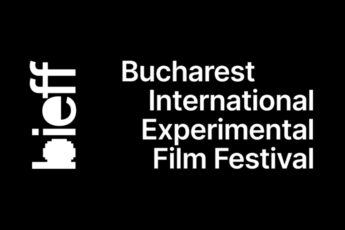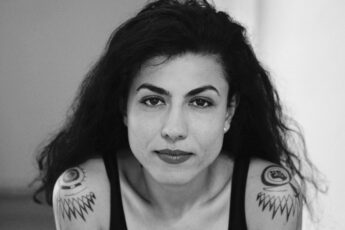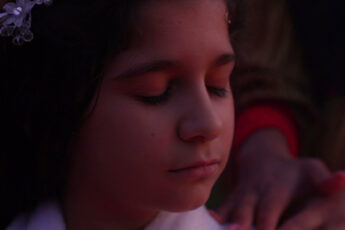
We met Vlad Petri during the Sarajevo Film Festival (August 13-20), where he presented “The Same Dream”, a short that weighs the price of Romanian participation in the US-led invasion of Afghanistan. Petri speaks about the background of the film, false perceptions of Afghanistan, and a recent parade marking the close of Romania’s Afghanistan mission.
What was your initial inspiration for the film?
The original idea came after I talked with a Romanian soldier and he told me this story – while being deployed in Afghanistan, he saw a wounded child during a patrolling mission and he tried to save her. He phoned his superiors, the officers in charge, and they asked “Who is this person? Is it one of you? Someone from the army?” He replied, “No, negative, it’s an Afghani,” and they said “We cannot take her. Maybe she’s a terrorist or something”. But it was just a wounded child. The story really had an impact on me – at that moment I remembered Afghanistan, how I saw it when I traveled there 12 years ago. I was really shocked when I arrived in Kabul. I couldn’t look at it anymore, the mark that reality left on me was so strong. There were wounded children on the streets, people asking for money, and it just had an apocalyptic feeling. And all these things mixed in my mind – the image of the Romanian, from this country in Eastern Europe, going more than 5,000 kilometers to fight for something, for the ideology of democracy, which is of course something that you hear in the media, but actually most of them go for the money. And the children there are wounded or die because of foreign interventions. So all these ideas mixed together and that was what drove me to start this film.
And how did you go from that inspiration to the format of the film, which is very specific?
In the beginning, I wanted to have the images of Afghanistan from the army, the crude technical images from an APACHE, images of people being filmed from above like in a video game, these images that made the headlines thanks to Wikileaks… It had had a profound impact on me when I saw the leaked images from Baghdad, with the journalists and other people being killed. So, I wanted to have these images of local civilians from above, from this imperialistic position, with the voices of the Romanian soldiers who went there, because they also had this colonial view that they’re going from Romania to this poor country, even if Romania is Eastern Europe and we’re also poor. So I wanted to combine these things, but it didn’t work out, so I was left with these images and I was thinking about this story. I was filming in a village in Transylvania, close to where I heard this story, and I started thinking about combining them.
Actually, the missing piece came from reading Svetlana Alexievich’s book Zinky Boys, which tells the drama of USSR soldiers in Afghanistan and how they still dreamed about the war, which is where the title The Same Dream came from. They have the same dream of the war, and I wanted to have the images of the war but also his dreams about his childhood in Romania, the village. So I combined these images from Romania with images from Afghanistan, and that’s how the film started to take shape.
How did you come to the idea to tell the girl’s story as well?
It’s a hybrid documentary and this is the fictional part. In the media you only have the soldiers’ stories, these “brave” stories. In Romania, there was also a parade after Afghanistan, which – I don’t have the words to describe. The president came and said it would be in the history books, and in three weeks the Taliban retook power, so what history books? You didn’t do anything. It was just war and people were killed. So, in the media there are only these soldiers’ stories and I really wanted someone from Afghanistan to speak in the film. It’s not easy to go there and find stories, so I imagined her story and I wanted to have a balanced perspective. I didn’t want it to be only our point of view, I wanted to have the story of a child caught in the middle when a bomb exploded. At that moment, she just saw someone speaking in a different language, trying to help her but not helping her in the end. I wanted to have both sides of the story.
Did you consider filming in Afghanistan?
If I could go to Afghanistan, if it would be safe to go now, I would like to go to meet people in the villages where the Romanians were and ask them what their impression of them was. Because obviously the Romanians were going there, giving out candy – they had this campaign to change the mentality of the people in the direction of Western culture by giving away candy, they were giving away Fanta and Coca Cola. It’s like buying them, and people were really poor, and Coca Cola was great for the children because there is not enough water. I would love to have gone to really talk with them. Maybe some people would say “Oh, they were really nice.” Some would say other things. I would have loved to have their point of view, but truth be told it’s hard to do this. Even if you did manage to go with a translator and everything, I don’t know if you would really hear the truth since it’s a culture where you don’t always say things as they are due to customs. People aren’t accustomed to saying nasty things in front of a foreigner, because they have this culture of hospitality, but still it’s something I would like to try.
What was the concept behind filming in black and white?
It came from the war images, from the APACHE images, as the infrared images are black and white. I was thinking of having the images from the soldier’s village in color, but I thought it works better in black and white. I also wanted to put the soldier’s story on the same level as the child’s. But I also worked on the images, for example the infrared images of the war. The people are white, and the landscape is black, because these images are thermal images. People emit warmth through their bodies so you cannot hide anywhere. Even if you hide under a tree, even if you pretend to be dead, the powerful military technology sees you. I even heard stories of soldiers taking really cold blankets soaked in water and putting them on, freezing to death, just so the warmth of their bodies wouldn’t be transmitted to the war helicopters. It’s crazy. I inverted the images so the bodies turn up in black and the landscape is white, like the romantic white snow from the village. I wanted to combine them and have a dialogue between them. I found these images look even more real with the people painted black and the atmosphere painted white.
What was your process for choosing the images you used?
The images from the village just came together. The shot with the train is like the departure of the soldier, then there’s the image of the river and the house. I imagined that the girl lives near the river, but you see the river from the soldier’s village, because the images combine. It’s like reality, but at the same time it’s in the soldier’s head, the girl is populating his universe, the dreams, the nightmares. These things came out during editing. For example, I have the GoPros with the tanks patrolling and then the scenery is filmed from higher and higher above, and then I have some GoPros from the army with the soldiers preparing to go to fight, then these horrifying images of people being killed from above. The camera perspective keeps moving higher, because in the beginning the soldier is more like an explorer, he’s in a new world. He feels like he’s on the moon or on Mars, but the more he stays there the more involved he gets, and then we have this perspective where people get smaller and smaller because the camera moves further and further away, and yet the trauma becomes bigger and bigger. So that was the process, and I used that decision in order to choose particular kinds of images.
This is a very formally experimental film. Do you think it’s important for documentary to push the boundaries of the form?
I think I used to be really impressed by observational cinema for such a long time, watching all these films by Raymond Depardon, the Maysles Brothers, Frederick Wiseman. I was so impressed by the power of the camera in observational cinema, and I still am, but I now think there should be a blurred line between fiction and documentary. They should work together, like in the films of Radu Jude and Loznitsa. There are many directors who try to combine these two different approaches. I myself was wondering if the film is too formal, but it’s such a big question. I want my films to be understood by as many people as possible, and you think “OK, this is more formal, so it will be for festivals, for well-educated people, let’s say.” But even if your film isn’t formal, I think it’s hard for the general public to see them. Documentaries don’t have a platform, and most people are tired after working all day. For them it’s much easier to watch a TV series or telenovela, and I don’t blame them.
You’re also working on a feature documentary about Iran. Do you have a particular connection to the Middle East?
There have been anti-corruption protests in Romania in recent years, and Romanians are fed up with corruption, and I think it’s something very Eastern European and Balkan. But that’s not the issue – corruption is so related to capitalism, but we don’t talk about it in this way, so many Romanians talk about wanting to be a different country. They say “we want a country like [ones] outside of Romania” (“vrem o țară ca afara”). Obviously this slogan simply means people want to be like the West, like Germany and France. But the irony is that Romanians are not treated very well in the West. Romanians, Polish people and others are treated like second-class citizens in Europe. So I was wondering, if we want to be or have another country, what is this outside space we abstractly refer to? There is also Bulgaria, there is also Ukraine, there is also Turkey, Iran… We’re near a big sea and near other important cultures. The Middle East also fascinates me because it brings together so many people, so many cultures, and they’re also very neglected. People say “oh, they’re terrorists” and things like that, and I’m curious to actually find out more about this region.
As for the upcoming project, it’s a story about Romania and Iran, about two women who studied medicine together in Bucharest. They were good friends and they sent each other letters. The working title is “Between Revolutions”, and the story departs from the Islamic revolution in 1979 and lasts until the 90s. It is a film about ideologies, about dreams, about Communism, Islam, about these countries that tried to be anti-capitalist and anti-imperialist, and about all the problems they faced, including their paternalistic structures. And it’s a story told from the perspective of women in these two countries. I’m also curious to see how it goes because we’re still in the development process with it.
What’s the general discourse concerning Afghanistan in Romania?
Romania was very proud of its involvement. In the media they only told brave stories about Romanians there. The minister of defense who was in charge of the troops said that Afghanistan was the way for us to be part of the elite of this select military club. So that’s the discourse, and at the same time Romanian soldiers went there and died. Twenty-seven soldiers died and more than 200 were wounded. At one point, Romania was the fourth largest contributor of troops in Afghanistan.
You know, you come from this poor country, and you want to be the best – Romanians have this problem. If Western media outlet address something in Romania in a critical way, they get angry. They always want to be the best, including in the military, and they don’t think a lot about what this war actually is about. But things will start coming out, I think. We need to start a discussion about this. I’m not saying that we shouldn’t be part of NATO, but we need to have a discussion about it. If you say something against the alliance, then everybody says you’re with Russia and things like that. This antagonism is really stupid. This also triggered the idea for my film, because in the media everything about this war was milk and honey, but in reality, after I went to Afghanistan, I saw what was going on there. The soldiers also know it, but they don’t talk about it, it’s hard to really talk about what’s going on there. For most of them, going there was just about money, because they don’t need to spend much during their deployment. Romania also went to Afghanistan two years before they were admitted into NATO, and it was like a precondition: “Come with us and then you’ll be in this elite military club”.
As I said, they only think in terms of the West, because after so many years of Communism and isolation Romanians dreamed of being part of the free world, of the Western world. They dreamed about blue jeans and Coca Cola. So they cannot put themselves in another position, to just think for a second about how it is to be in a country where bombs are dropping, like Syria or Iraq or Afghanistan. Only then can you talk about the war in critical terms. But they can’t do this, they only dream about the West, and they think everything the West does is good, including NATO spending and everything. After Trump was elected, our president was the first European president to go there and say “Hi, we want to invest 2% of our GDP in NATO.” Romania is poor, you know, but even though the European Union was looking at this imposition to spend 2% of GDP on the military industrial complex with a lot of skepticism, Romania was the first country to follow through. Education and culture are really poorly funded, but we spend a lot on the military to take part in these foreign wars.
Thank you for the interview.




Leave a Comment